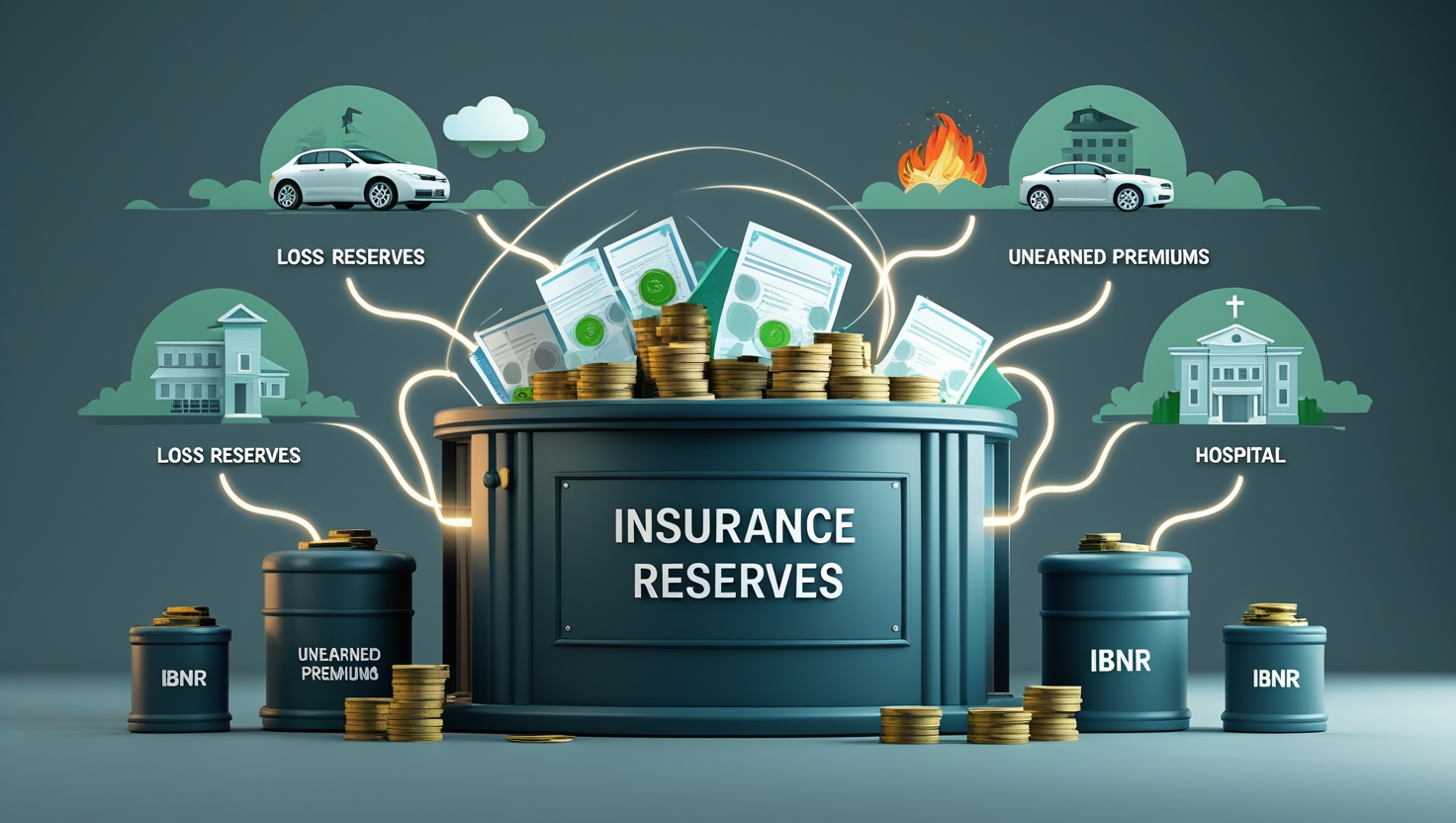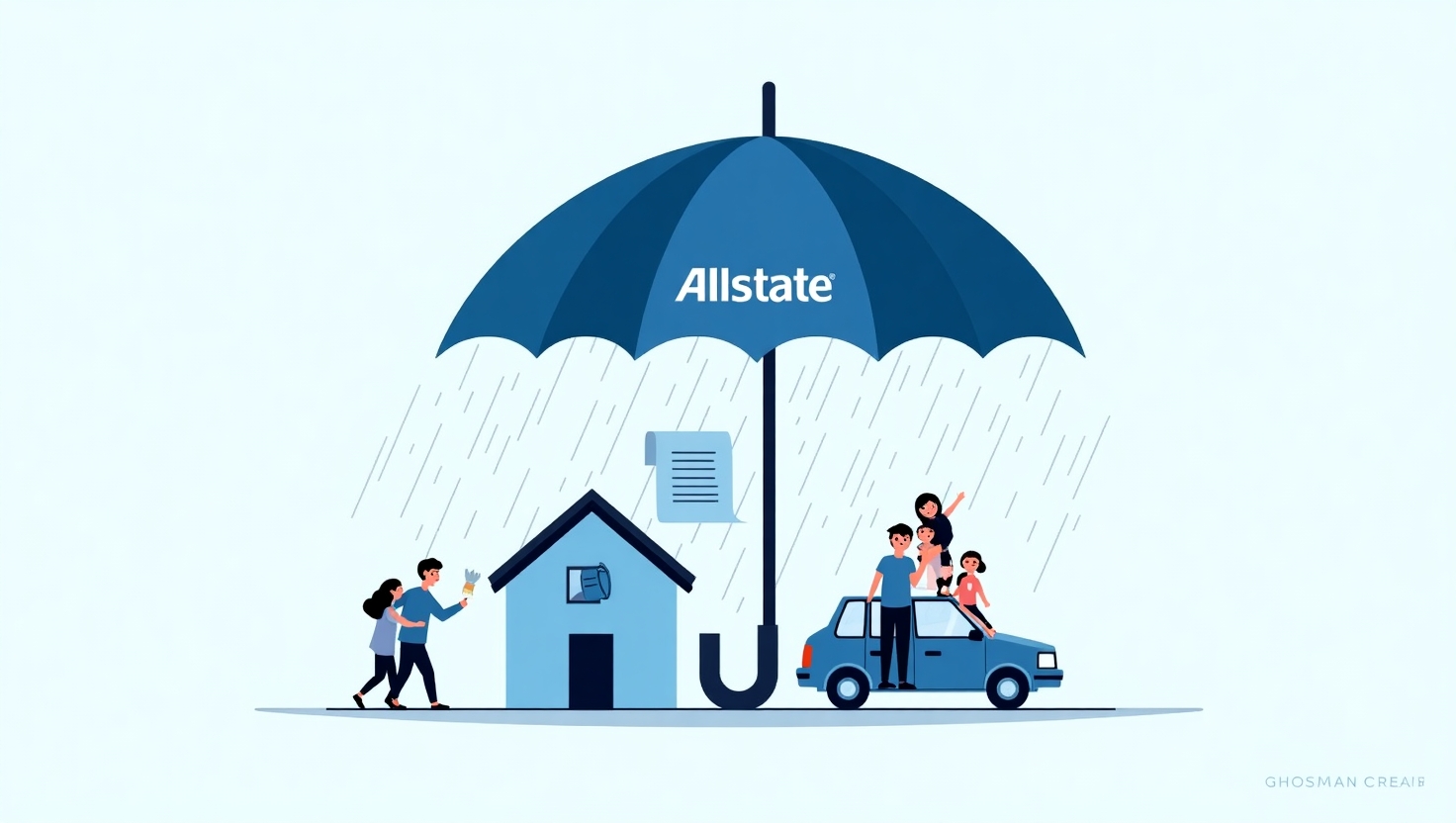Table of Contents
Imagine this: you get into an accident, file a claim, and your insurer promises to cover the damages. But where does that money come from? It doesn’t magically appear. Behind the scenes, insurance companies rely on something called reserves—a concept as crucial to the industry as lifeboats on a ship.
In this post, we’ll break down exactly what reserves in insurance are, how they work, and why they matter to you as a policyholder. Whether you’re a curious consumer, a budding insurance professional, or someone trying to decode the fine print on your policy, this guide offers a fresh, easy-to-follow perspective—minus the jargon.

💼 What Exactly Are Reserves in Insurance?
In the simplest terms, insurance reserves are funds that insurance companies set aside to pay future claims. These aren’t just guesses or placeholders—they’re carefully calculated amounts based on historical data, industry standards, and predictive models.
Think of reserves like a rainy-day fund for insurers. They ensure that when a claim is made—whether tomorrow or five years from now—there’s money available to fulfill the insurer’s promise.
There are two main types of reserves:
- Loss Reserves: Set aside for claims that have already occurred but haven’t been paid yet.
- Unearned Premium Reserves (UPR): Held for premiums collected in advance for coverage that hasn’t been “earned” yet because the policy period isn’t over.
🔍 Why Reserves Are Crucial to the Insurance Industry
Reserves aren’t just accounting entries—they’re legally required financial commitments that ensure an insurer stays solvent. In fact, every state insurance department in the U.S. monitors reserve levels closely.
Here’s why they matter:
1. Protecting Policyholders
Reserves guarantee that you, the customer, will get paid when you file a legitimate claim. It’s part of the trust that underpins the entire insurance system.
2. Regulatory Compliance
Insurers must meet specific reserve requirements set by regulators to ensure they’re financially stable enough to operate. Companies that don’t comply can face penalties or even lose their licenses.
3. Stabilizing the Market
By maintaining healthy reserves, insurance companies can handle a spike in claims during events like natural disasters, economic downturns, or pandemics—without collapsing.
🧠 How Are Insurance Reserves Calculated?
Here’s where it gets interesting (and a bit mathy—but we’ll keep it simple).
📊 Reserve Estimation Methods
- Case Reserves: Assigned individually by a claims adjuster to a specific reported claim.
- Incurred But Not Reported (IBNR) Reserves: For losses that have happened but haven’t been reported yet.
- Statistical Models: Use past claim trends and loss ratios to predict future payouts.
🧾 Example:
Let’s say an insurer knows from historical data that, on average, 20% of all auto claims settle for $10,000. If they expect 100 claims this year, they’d need a reserve of $200,000 at minimum—plus some wiggle room.
🧱 Loss Reserves vs Unearned Premium Reserves: What’s the Difference?
| Feature | Loss Reserves | Unearned Premium Reserves (UPR) |
|---|---|---|
| Purpose | To pay future claims | To refund premiums if policy cancels |
| Timing | After a loss has occurred | Before the coverage period ends |
| Who It Benefits | Claimants (you, if you file a claim) | Policyholders (in case of cancellation) |
| Regulatory Oversight | Highly monitored | Also regulated, but more predictable |
🧭 What Do Reserves Mean for You, the Policyholder?
If you’re thinking, “This sounds like an internal thing for the company—why should I care?”, here’s why:
💡 1. Premium Pricing
Insurers use reserve data to predict future losses and adjust premiums accordingly. Overestimated reserves could mean you’re overpaying. Underestimated ones could put the company (and your claim) at risk.
💡 2. Claim Speed and Accuracy
Well-managed reserves allow insurers to process claims faster and more accurately. Companies that consistently mismanage reserves often delay payments or contest claims unfairly.
💡 3. Company Health
Before buying a policy, look at an insurer’s financial strength rating (from agencies like A.M. Best or Moody’s). Strong reserves usually translate to long-term stability.
💬 Real-World Insight: A Claims Adjuster’s Perspective
As someone who once worked as a claims analyst for a mid-sized auto insurer, I’ve seen firsthand how reserves affect every part of the process—from how we assess damages to how quickly we can cut a check.
One memorable case involved a five-car pileup on an icy road. Initial estimates pegged the damage at $60,000 total. But our reserve was only set at $40,000. We had to file for a reserve increase internally, which delayed payments and caused frustration for everyone involved.
That situation taught me the value of accurate reserve setting—not just for compliance, but for customer satisfaction.
🏛️ Regulatory Oversight: Who Watches the Watchers?
In the U.S., each state has an insurance commissioner responsible for oversight. They rely on standard-setting bodies like the National Association of Insurance Commissioners (NAIC) to ensure consistency.
Companies undergo regular actuarial audits and must submit Annual Statement Reports, which include reserve data. If reserves fall short, regulators can impose corrective actions—or even step in with state-managed rehabilitation plans.
👉 Learn more about regulatory oversight on NAIC’s official site.
🌎 International View: Reserves Aren’t Just a U.S. Thing
Globally, insurers follow similar principles, though frameworks differ. The International Financial Reporting Standard (IFRS 17), implemented in 2023, standardizes how insurers worldwide measure and report reserves and liabilities.
European insurers also operate under Solvency II, a comprehensive framework aimed at minimizing insolvency risk through stringent reserve requirements.
🔄 Reserves and Reinsurance: How the Safety Net Has Its Own Safety Net
Even insurers need insurance—that’s where reinsurance comes in. Reinsurers often help absorb catastrophic losses (think hurricanes or major lawsuits), allowing insurers to keep reserve levels more manageable without going under.
Well-structured reinsurance agreements can reduce the amount a company needs to hold in reserves while still maintaining customer protection.
🧠 Fresh Perspective: Are AI and Big Data Changing Reserve Practices?
Absolutely. With the rise of machine learning and predictive analytics, insurers are now:
- Detecting claim trends earlier.
- Improving IBNR reserve estimates.
- Reducing the need for manual case reserving.
Companies like Lemonade and Hippo are already using these technologies to improve reserve accuracy—and ultimately, the customer experience.
Still, human oversight remains crucial. AI isn’t immune to biases or data limitations, and regulators still require actuarial sign-off.
🚀 Final Thoughts: Why You Should Care About Insurance Reserves
Reserves in insurance might sound like boring bookkeeping, but they’re the backbone of every promise your insurer makes. They ensure that when life throws curveballs—be it a car crash, a house fire, or a health scare—your insurance company can catch them without dropping the ball.
Understanding how reserves work gives you a powerful lens through which to evaluate insurers, assess risk, and even advocate for better service.
✅ Key Takeaways
- Insurance reserves are funds insurers set aside to pay current and future claims.
- They come in different types: loss reserves, IBNR, and unearned premium reserves.
- Accurate reserves affect your premiums, claim payout speed, and company stability.
- Regulators and international standards help ensure reserve practices are fair and effective.
- Emerging technologies like AI are reshaping how reserves are calculated and managed.
📣 Let’s Keep the Conversation Going!
Got a question about how insurance reserves affect your policy? Curious about a specific claim situation? Drop your thoughts in the comments below or explore our related posts on how premiums are set and how insurers stay solvent during disasters.
Or better yet—subscribe to our newsletter for weekly insights into the world of insurance, explained clearly and without the fluff.




